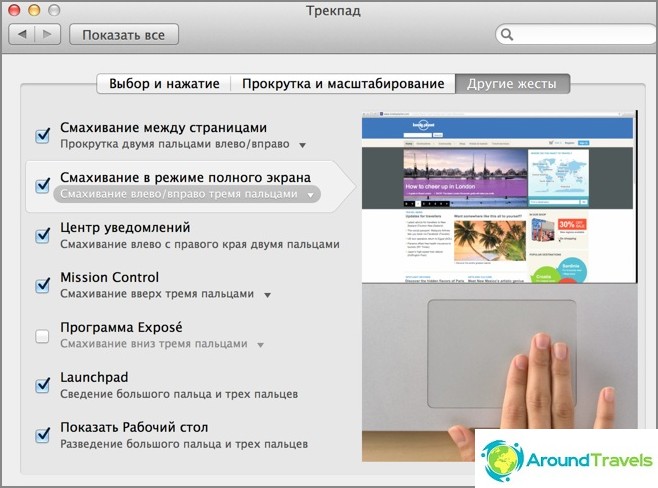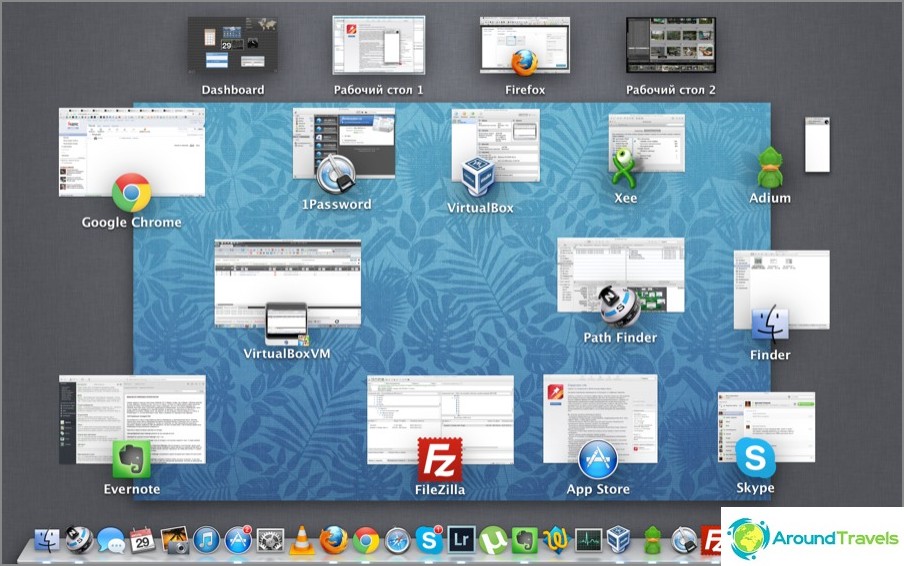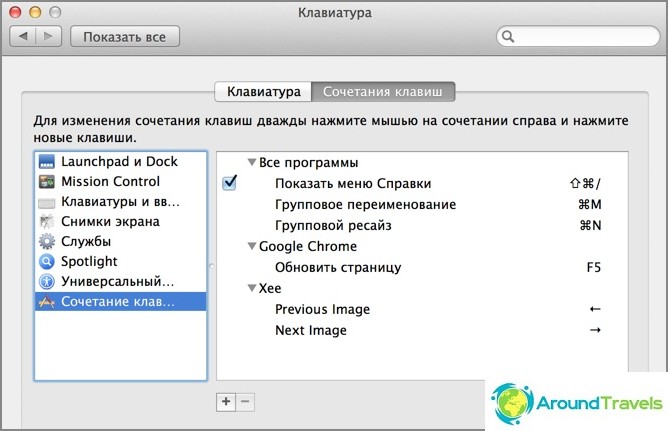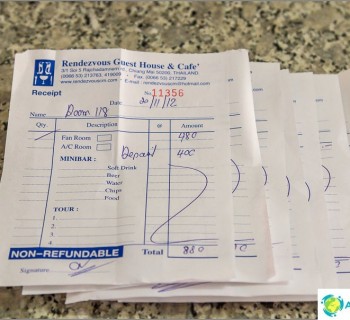I recently voiced my Review of Macbook Pro 13 Retina and now, as promised, I am publishing a mini-faq on the topic of switching from windows to mac. If anyone remembers, sometime at the very beginning I asked a few questions about the use of poppy. Then I asked if there was some kind of manual for beginners on the net. They advised me a lot in the comments, but no one gave a link to the consolidated post, apparently everyone figured it out and themselves without any problems. In principle, this is indeed the case, it is not difficult to figure it out, much easier than it seems. But nevertheless, I still wrote this article, which will contain what I needed then. Someone may find this useful during the transition..
The content of the article
- one Touchpad control
- 2 Multiple desktops
- 3 Hot buttons on mac
- 4 External hard drive on mac
- five Applications and analogues
Touchpad control
On the touchpad, there are taps and clicks (rather hard pressed), as well as various gestures. Therefore, first of all, you need to go to Programs / System Preferences / Trackpad and see everything that is there, some of the questions will end there. The touchpad here is excellent, and I still don’t use a mouse in principle, I hope to get used to it without it, since traveling with it is not always convenient due to the need for an additional surface.

Touchpad gestures
I will list the most basic actions on the touchpad.
Double click: double tap or single click.
Middle button click: cmd + tap.
Select text: click on the touchpad and, without releasing, select text. And through a double tap, as you can't do on Windows.
Moving a window or tab in the browser: click on the touchpad and, without releasing, drag where you want. But it's easier to do it with two fingers, with one click in the lower left corner (the cursor should be on the name of the window), and with the other drag. The second method allows you to drag to any distance, while the first is limited by the size of the touchpad.
Scroll down or up: swipe up or down with two fingers at the same time (very convenient).
Gesture three fingers up: we get into the mission control, or if, in Russian, then all windows are reduced and we see all running applications on the desktop at once. By clicking on the reduced window, it is now very easy to go to the application you need.
Gesture three fingers left / right: move between desktops.
The last two gestures are just mega-convenient! Now I can't imagine how you can work without them..
Multiple desktops
I recommend using multiple desktops, it is very convenient to switch between them using a gesture on the touchpad (three fingers left / right) or hot keys control + left / right arrow.

Mission control
Desktops can be created while in Mission Control mode. In any desktop, you can run the required number of applications or move those already running there. Someone, for example, distributes by topic: work, communication, entertainment. Also, any application switched to «in full screen» (usually shift + cmd + F) creates a new desktop by itself. True, in this case, only one can be on this desktop. Thus, we have the required number of desktops, each of which contains, or one full-screen
an application, or several applications with windows.
Hot buttons on mac
What is convenient is that the basic combinations are valid for any program, such as, «open settings». This will work everywhere. It is equally convenient that you can create hotkeys for yourself for almost any action in any program. This is done in System Preferences / Keyboard / Keyboard Shortcuts.

Setting up hot buttons on mac
To the bottom of the page: cmd + down arrow
Top of page: cmd + up arrow
End phrase: cmd + right arrow
Start phrase: cmd + left arrow
Close hung app: option + cmd + escape. Or we open System Monitoring (located in the programs), this is an analogue of the task manager, and there we select the process to close.
Hide Dock: option + cmd + D. Free up screen space and only appears on hover.
Copy: cmd + C
Paste: cmd + V
Cut in Finder: first just copy and then paste via option + cmd + V
Normal cut: cmd + X. Works in all programs, and in particular in Pathfinder.
Delete: cmd + delete
Switching layout: cmd + space
Cancel switching punto switcher: option layout
Start spotlight window: control + spacebar. Spotlight is a global mac search.
Exit the application: cmd + Q. Not quite an analogue of the red cross, because some applications, when you click on the cross, remain hanging in the background. And here is a complete exit.
Close the application window: cmd + W. It is convenient to close tabs in the browser or the Finder window (it always opens as a window).
Maximize the window to full screen: control + command + F (less often shift + cmd + F)
Point: cmd + 7
Comma: cmd + 6
Open program settings: cmd + ,
Hot buttons on Mac - http://www.danrodney.com/mac/index.html
External hard drive on mac
I discovered the unpleasant news that Windows and Mac have different file systems, which means that an external hard drive can be used by default either with a MacBook or with a Windows laptop. That is, my hard drive, formatted in NTFS, can be seen on the Mac, but from it you can only copy files to the laptop, but you cannot write back. In fairness, I can say that if you reformat hard to HFS + (Mac file system), then Windows will not see such a disk at all, neither for copying nor for writing.
There are more or less ways out of this situation:
- Format hard to FAT32. But there will be a 4 GB file size limit.
- Leave the hard drive in NTFS and install the NTFS Tools, NTFS-3G, Paragon NTFS, Tuxera NTFS and the like drivers on the poppy. The bad solution is that you can lose all the data on the external drive if you use it frequently with poppy. Also, not all Mac programs will be able to work with the disk directly (I read about this, but did not check it).
- Format the disk in HFS + and install Mac Browser on Windows. The same thing, you can lose data with frequent use on Windows.
- Format in exFAT, seen by both operating systems, but the file system itself is not very suitable for storing important files, because it is not very reliable.
I did it differently. Since the files on the hard disk are very important to me, sometimes I have them in a single copy, as well as this disk is working and I work with it every day, then the choice is obvious for me - HFS +! This is the most stable and secure solution, and you don't need to install anything else anywhere. But since sometimes I have to transfer files with a Windows laptop, I also created an exFAT partition with a size of 50 GB on the disk, this is quite enough to transfer files to Windows or work with this disk on it. Alternatively, set up a network between laptops, and use network drives.
Applications and analogues
You can find all the programs with tablets on any trackers. You can buy or download free ones on the App Store or official websites. In fact, there are a lot of free programs..
Lightroom remains the same, there is a version for a poppy with a tablet or for money. Instead, they still recommend a cheaper, but not the worst analogue - Aperture, but I have not installed it as unnecessary. And the analogue of Photoshop is Pixelmator, although Photoshop can be installed.
Built-in image viewers (there are two of them) by default do not allow flipping photos from one folder, for this you need to select a group of files and press enter or spacebar, depending on which viewer you like best. You could get used to this additional action, but they flip through Raw on Retina with a delay, moreover, and small pictures are too small, the resolution is high.
And I installed myself a free XnviewMP viewer. He flips through everything quickly, and scales the photo to fit the retina (multiplies the resolution of the photo by two), and in it you can change the image format, crop the photo, and so on. The only bad thing is that for me it is a little podglyuchivaet, it lies in not remembering some settings. I also installed the Xee and Sequential viewers, but they also scroll through RAW very slowly. Xee is still standing and is used for scrolling through jpeg, perhaps I will only leave it, because Raw began to look only in Lightroom. There is also a Viewer from the App Store for 169 rubles, simple and scrolling through everything from the folder, but also scrolls through RAW with a delay.
Clipboard history - Clipmenu, free.
Punto switcher has a version for poppy, it's a pity only it doesn't have a diary, it's free.
Microsoft Office - there for a poppy with a tablet or for money.
Firefox, Chrome, Skype, Utorrent, Evernote, Dropbox, Kies - available for Mac, free.
File manager - or built-in Finder, which is convenient in principle, but only one window. Or I use the Path Finder, which is similar to the regular Finder, with only two windows (tablet or cash). There is also Double Commander, almost a copy of Total Commander.
Webmoney keeper classic - does not exist for a poppy, therefore either install it on a virtual machine, or connect webmoney mini to it to manage wallets, or re-register the browser webmoney keeper light. I have chosen the first option so far, and then I want to make light (I have been going for a long time), as soon as there is time to re-create a personal passport.
Watching Videos - VLC, Free.
Listening to music - iTunes, built-in.
Storing passwords - 1password, free if you do not use a subscription to their service. Features: storage of the database in a dropbox or on a computer, compatible with all browsers, you can view passwords via the Internet from the browser if they are stored in the dropbox. Convenient program. Or you can store everything in the free Lastpass, it is convenient that you do not depend on the operating system (this is an online service, not a program) and there are extensions for all browsers.
Instead of Qip, put Adium. Since I hardly use ICQ and I do not need an old history, then the normal option is.
Instead of Notepad ++, put Textwrangler. Nice program with syntax highlighting that allows you to download files directly from ftp. I really liked. There is still Sublime Text, but something is not very good for me.
FTP Manager - FireFTP plugin for Firefox, free Filezilla app and others.
Instead of Denwer, put Mamp, there is a free version and a paid one.
Instead of Advego Plagiatus, we put eTXT Antiplagiat. http://www.etxt.ru/antiplagiat/
There is no analogue of Key Collector, you can use it only through emulation.
Virtualbox Windows emulation, free. On the retina, everything looks so-so, plus the bidirectional clipboard does not work (update. Put the guest additions, everything worked), the Internet is lost (update. In the latest versions is already normal). So for serious work with Windows Virtualbox is not very suitable, but it will do for me for now. In fact, only because of the Key Collector and Webmoney Keeper, I still use Windows emulation.
And for higher requests, you need to install Parallels, purchased or with a tablet.
Built-in Automator utility
I would also like to mention a built-in program like Automator. With it, you can record various scenarios, various actions. For example, I immediately created for myself a group renaming of files and a group resize of images. And I also assigned hot buttons to each of these actions. A very useful thing!
P.S. As a result, I got much more convenient control (due to the touchpad and gestures) and all the same programs that I had on Windows or their analogues. Of course, not all programs are mentioned here, but these are the ones that I needed. You can also read the answers to my questions in these comments, there are other programs that were not useful to me.
P.P.S. I will be glad if you give a link to this article to your friends that they are about to switch to mac.


